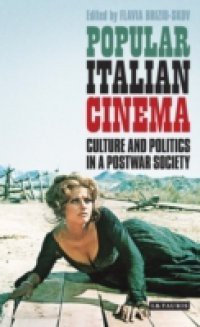With its monsters, vampires and cowboys, Italian popular culture in the postwar period has generally been dismissed as a form of evasion or escapism. Here, four international scholars re-examine and reinterpret the era to show that popular Italian cinema was not only in tune with contemporary political and social trends, it also presaged the turmoil and rebellion of the 1960s and 1970s._x000D__x000D_Through a perceptive analysis of the cultural and political atmosphere of the times, we come to see how the changes wrought by modernization, urbanization, the rise of consumerism and the sexual revolution were reflected in popular cinema. The 'sword and sandal' film, based on Greco-Roman mythology and starring body-builders, was linked to the increasing conservatism and growing politicization of Italian film and society. Anxieties unleashed by the sexual revolution found expression in horror films and in the spaghetti western, particularly in violence against women, as a result of growing male anxiety towards female emancipation and a crisis in the prevailing patriarchal order. Comedy Italian-style re-worked the impact of the economic boom and a consumerist lifestyle, as a new middle-class recognized itself at the cinema._x000D__x000D_Together, this array of cinematic visions conveyed a plurality of messages that ranged from the more conservative and pro-establishment to the more rebellious and pro-revolutionary, at the same time that they responded to the emotional needs of an emerging mass audience and offered ways of binding together an increasingly distressed social order. With striking insights into the links between popular culture and politics, Popular Italian Cinema will be indispensable for specialists in film and media studies, Italian and cultural studies, as well as social history.

